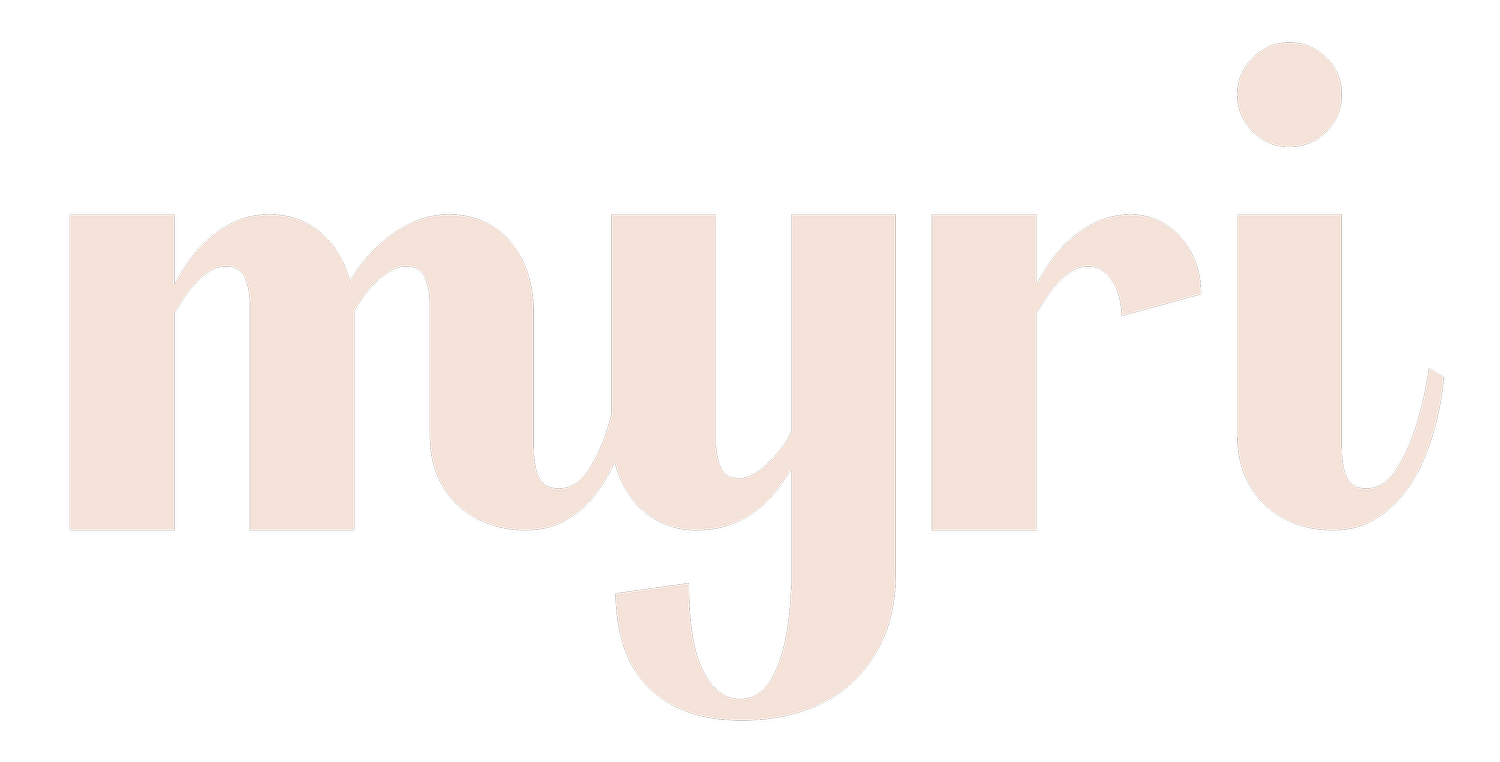Kegels Aren't Enough! Your Postpartum Pelvic Floor Playbook
Just a daily reminder: Once you have kids please take care of your pelvic floor. Seriously,
from,
A girl with a fractured back.
- Britanny Mahomes
Welcoming a new baby is a life-changing event, bringing joy and a series of new experiences. Along with this, however, your body has been on its own journey, especially your pelvic floor, which has worked hard to support you throughout pregnancy and childbirth. You know the muscle you can’t see, but does some heavy lifting (no pun intended!). Now, it needs some care and attention. The pelvic floor muscles, which support vital organs like the bladder, bowel, and uterus, can become weakened during pregnancy and childbirth. Focusing on pelvic floor health is crucial for a smooth postpartum recovery and overall well-being.
Women stumble upon this muscle after often experiencing pain, leaking (that leak in fitness class or sneeze), pain with intercourse, back pain - but honestly, it’s way easier to know this info before and gently recover than chase haphazard workouts to fit into a mold, to later find out that there’s damage done. Here, we are gonna walk through some gentle exercises and practical tips to help you restore strength and function to your pelvic floor, starting with diaphragmatic breathing.
Understanding the pelvic floor
There is a possibility that you might not have heard of this, but the pelvic floor is a group of muscles forming a supportive sling at the base of your pelvis. These muscles play a critical role in bladder and bowel control and sexual function. After childbirth, many women experience issues such as urinary incontinence, pelvic pain, or even pelvic organ prolapse. Taking steps to strengthen these muscles can prevent or alleviate these problems, enhancing the overall quality of life. Think of it as a hammock! It holds all the essential organs, like we mentioned, including the uterus.
The gentle start: diaphragmatic breathing
Diaphragmatic breathing is a simple yet powerful way to begin healing and strengthening your pelvic floor. This type of breathing engages the diaphragm and promotes relaxation and gentle activation of the pelvic floor muscles. This is a power move that does more than what is at face value.
Diaphragmatic breathing can be a powerful tool for enhancing your pelvic floor strength, reducing stress, and improving overall respiratory function. Consistent practice will yield the best results.
How to practice diaphragmatic breathing?
Diaphragmatic breathing, also known as deep breathing or belly breathing, is a technique that can help improve your breathing efficiency and strengthen your pelvic floor muscles. Follow these steps to practice diaphragmatic breathing effectively:
Get comfortable:
Position: Lie on your back with your knees bent and feet flat on the floor. Alternatively, sit in a chair with your back well-supported. This move can be done in many positions, including standing or sitting cross-legged.
Relax: Make sure your neck, shoulders, and body are relaxed. You can use pillows to support your knees or head if needed.
Hands placement:
Chest hand: Place one hand on your chest.
Belly hand: Place the other hand on your belly, just below your ribcage. This will help you feel the movement of your breath and ensure you're breathing deeply into your diaphragm rather than your chest.
Deep inhale:
Through your nose: Slowly inhale deeply through your nose.
Belly movement: Allow your belly to rise as you fill your lungs with air. Your chest should remain relatively still. Imagine your diaphragm moving down as your lungs expand.
Slow exhale:
Through your mouth: Exhale slowly and fully through your mouth. You might purse your lips slightly as if you were blowing through a straw.
Belly falls: Let your belly fall naturally and gently draw your navel towards your spine. This action helps engage your pelvic floor muscles. Your chest should still remain relatively still.
Engage the pelvic floor:
During exhale: As you exhale and draw your navel towards your spine, consciously engage your pelvic floor muscles. Think of gently lifting and tightening the muscles you would use to stop the flow of urine.
Repeat:
Consistency: Practice this breathing technique for 5-10 minutes, 2-3 times a day. As you become more comfortable, try integrating this breathing into other exercises and daily routines, such as yoga, walking, or even sitting at your desk.
Progression:
Standing position: Once you feel comfortable with diaphragmatic breathing lying down or sitting, try practicing it in a standing position to integrate it into more dynamic activities.
Daily activities: Incorporate diaphragmatic breathing into your daily activities, such as while driving, during meetings, or before bedtime to help reduce stress and improve overall breathing patterns.
Tips for effective practice
Focus on your breath: Pay close attention to the movement of your breath and the rise and fall of your belly.
Stay relaxed: Keep your shoulders and neck relaxed throughout the exercise.
Be patient: If you find it difficult at first, don’t get discouraged. Diaphragmatic breathing can take time to master.
Use visuals: Imagine a balloon in your belly that inflates as you inhale and deflates as you exhale.
Benefits of diaphragmatic breathing
Enhances oxygen flow: Improves oxygenation throughout your body, aiding in healing.
Reduces stress: Promotes relaxation, helping you cope with the stresses of new motherhood.
Supports pelvic floor: Encourages gentle engagement of pelvic floor muscles, aiding in recovery and strengthening.
Myri offers personalized, holistic care and rehab with OBGYN-approved resources to manage pelvic floor issues. Our detailed resources help moms seamlessly begin their postpartum rehab, starting right where they left off. We have a detailed videos and guides on how to perform this!
Targeted pelvic floor exercises
Once you've established a diaphragmatic breathing practice, it is okay to move on to more focused pelvic floor exercises. These focused exercises help restore strength and function, reducing the risk of complications like incontinence and prolapse.
Kegel exercise
Kegels are a trusted way to strengthen your pelvic floor muscles but there are more effective, personalized techniques on the Myri app.
How to perform kegel exercise?
Identify muscles: Imagine stopping the flow of urine to locate your pelvic floor muscles.
Get comfortable: Sit, stand, or lie down in a comfortable position.
Contract and hold: Tighten your pelvic floor muscles and hold for 5 seconds.
Release and relax: Relax the muscles for 5 seconds.
Repeat: Aim for 10 repetitions, 3 times a day.
Bridge pose
Bridge pose strengthens the pelvic floor, core, and glutes.
How to perform bridge pose?
Lie down: Lie on your back with knees bent and feet flat on the floor, hip-width apart.
Lift hips: Press feet into the floor and lift hips towards the ceiling, creating a straight line from shoulders to knees.
Engage pelvic floor: Squeeze pelvic floor muscles as you lift.
Hold and release: Hold briefly, then lower hips back to the floor.
Repeat: Aim for 10-15 repetitions.
Cat-Cow stretch
This stretch improves flexibility and mobility in the spine and pelvis.
How to perform cat-cow stretch?
Start on all fours: Position yourself on hands and knees, wrists under shoulders, and knees under hips.
Arch back (Cow): Inhale, arch your back, let your belly drop, and lift your head and tailbone.
Round back (Cat): Exhale, round your back, pull your navel in, and tuck your chin.
Flow between poses: Move slowly, matching movements with breath.
Repeat: Continue for 1-2 minutes.
Squats
Squats strengthen the pelvic floor, legs, and core.
How to perform squats?
Stand tall: Stand with feet hip-width apart, toes slightly outward.
Lower body: Bend knees and lower body as if sitting into a chair, keeping back straight and chest lifted.
Engage pelvic floor: Squeeze pelvic floor muscles as you lower.
Rise up: Straighten legs to stand up.
Repeat: Aim for 10-15 repetitions, focusing on form.
Additional tips for pelvic floor health
Beyond exercises, small lifestyle changes can make a big difference during postpartum recovery.
Stay hydrated
Drink plenty of water to keep your bladder healthy and reduce the risk of urinary tract infections. If you are pregnant, this is so important already as you want to ensure you are not only hydrating for your, but also the baby.
Maintain a healthy diet
A diet rich in fiber prevents constipation, which strains pelvic floor muscles. Include fruits, vegetables, whole grains, and lean proteins.
Practice good posture
Good posture supports pelvic floor muscles. Keep your back straight and avoid slouching.
Listen to your body
Each woman's recovery journey is unique. Pay attention to your body and avoid overexertion. If you experience pain, stop and consult a healthcare professional.
How Myri Health can help?
Strong pelvic floor muscles are key to a smooth recovery and overall well-being. Myri Health offers step-by-step guides and resources to help you care for your pelvic floor. We understand the challenges of postpartum recovery and are here to support you with practical advice and expert guidance. Instead of feeling lost postpartum and waiting for your ‘6 week clearance’ appointment where you are ‘cleared for activity,’ Myri instead designs your unique postpartum recovery plan that you start right when you go home. It consistently takes your data and refines your unique gentle care plan - yes, even at week one, you can start by a 3-5 minute short, science backed, effective breathing exercises that not only slowly strengthens your deep core muscles, but your pelvic floor as well! Not only that, it manages and improves your diastasis recti (abdominal separation).
Download today and remember, it is never too late to recover appropriately.







